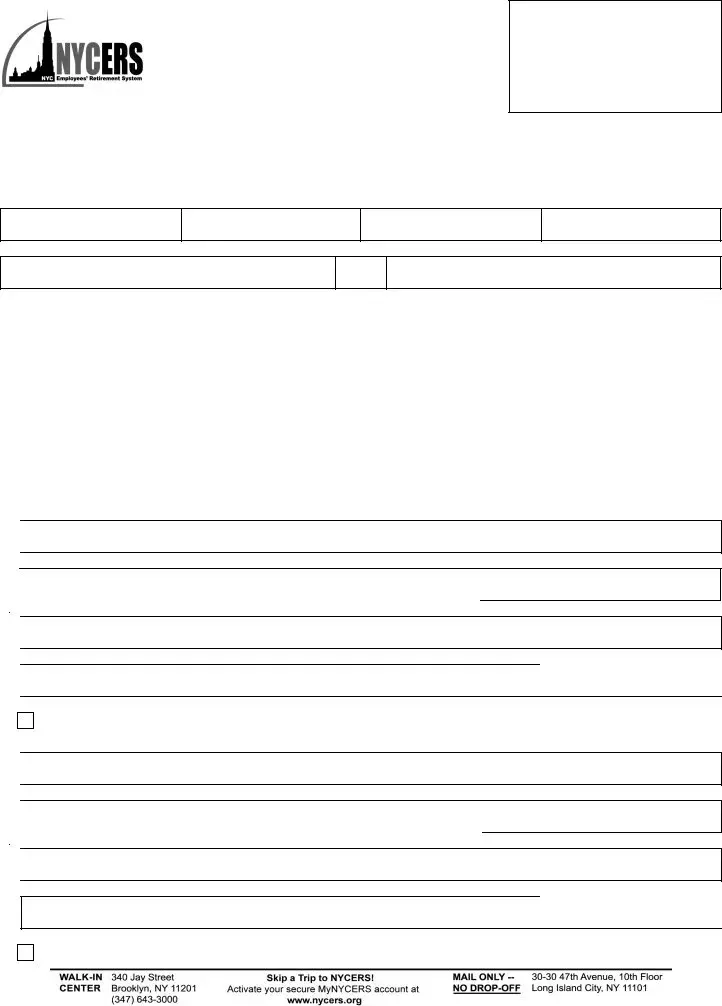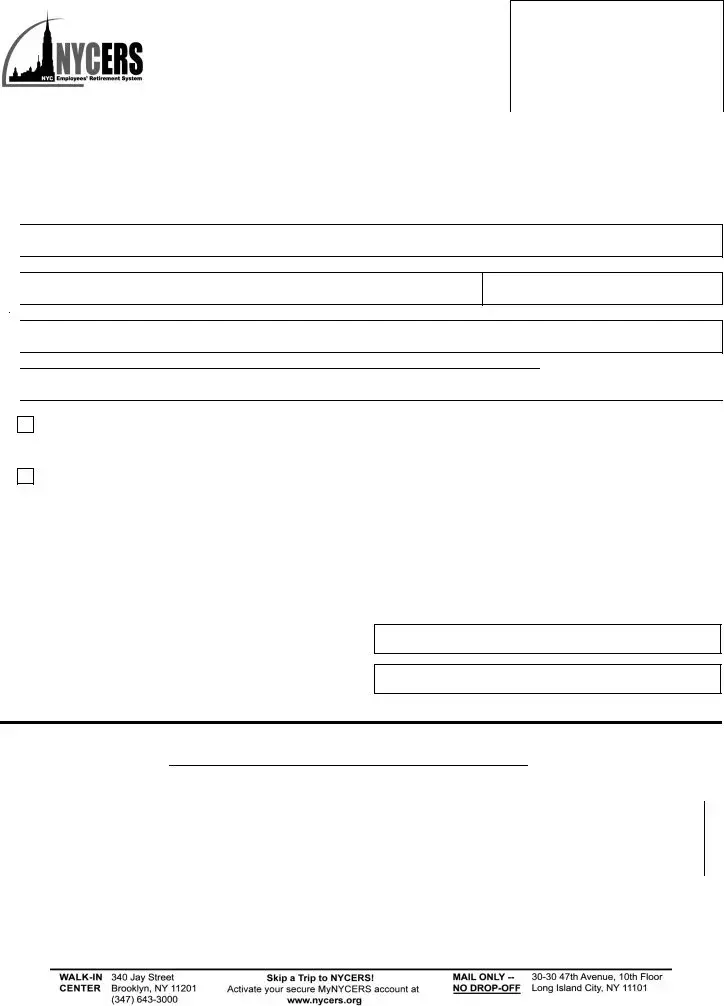Filling out the NYCERS F501 form, which designates beneficiaries for post-retirement lump-sum death benefits, is a crucial step for members of the New York City Employees' Retirement System. However, mistakes can be made during this process, undermining the member's intentions for their beneficiaries. Recognizing and avoiding these errors ensures that the benefits are distributed according to the member's wishes.
One common mistake is not updating beneficiary information after life changes such as marriage, divorce, or the birth of a child. It is essential to keep beneficiary designations current to reflect one's current intentions. Failing to update this form can lead to benefits being paid to an unintended recipient, which might not align with the member's current relationships or circumstances.
Another error is incorrectly filling out beneficiary details. For accuracy, every beneficiary's first name, middle initial, last name, full Social Security Number, and date of birth must be correctly entered. Furthermore, the relationship to the member and the percentage of the benefit each beneficiary is supposed to receive should be clearly specified. Mistakes or omissions in these details can lead to delays or disputes in the distribution of benefits.
Additionally, some members designate a minor as a beneficiary without completing the necessary guardian information. If a beneficiary is a minor, the member must check the appropriate box and fill out Form 137 with the guardian’s information. Without this, there could be legal complications in distributing the benefits to a minor, potentially resulting in the funds being tied up in court or requiring additional legal steps to appoint a guardian who can manage the funds on behalf of the minor.
Lastly, misunderstanding the role of contingent beneficiaries can complicate matters. A contingent beneficiary receives benefits only if the primary beneficiary predeceases the member. Members should clearly indicate both primary and contingent beneficiaries where applicable. Not designating a contingent beneficiary, or incorrectly filling out their details, overlooks a safety measure that ensures the member's wishes are met, even if the primary beneficiary cannot accept the benefit.
- Not updating beneficiary information after life changes.
- Incorrectly filling out beneficiary details.
- Designating a minor as a beneficiary without providing guardian information.
- Misunderstanding the role of contingent beneficiaries.
To prevent these mistakes, members should thoroughly review the F501 form before submission, ensuring all information is accurate and up to date. Seeking assistance, if unsure about any details, can help avoid these common errors, securing the intended distribution of their benefits.


